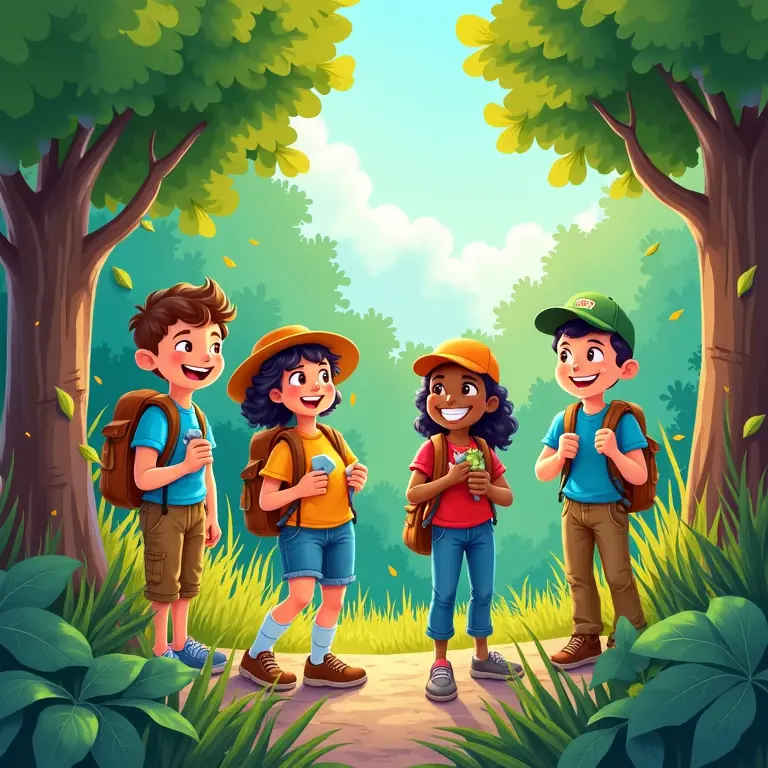Map Your Movements: A Friendly Guide to Geocaching Adventures
Have you ever wondered what it would be like to embark on a real-world treasure hunt? To follow clues, solve puzzles, and discover hidden containers filled with small wonders? Welcome to the exciting world of geocaching! This friendly guide will walk you through everything you need to know to get started, from understanding the basics to becoming a seasoned geocacher. We’ll cover the equipment, the techniques, the etiquette, and the sheer joy of this fantastic outdoor hobby.
What is Geocaching?
At its heart, geocaching is a global treasure hunt using GPS-enabled devices. Participants, called geocachers, hide and seek containers, called “geocaches,” at specific locations marked by coordinates. These coordinates are then listed online on geocaching platforms, allowing others to find them. Think of it as a digital scavenger hunt that takes you to places you might never have discovered otherwise.
The origins of geocaching trace back to the early days of GPS technology. In 2000, the U.S. government deactivated Selective Availability (SA), a deliberate degradation of GPS signals, making GPS technology far more accurate for civilian use. Dave Ulmer, a GPS enthusiast, celebrated this event by hiding the first geocache in Portland, Oregon, and posting its coordinates online. The idea quickly caught on, and the hobby exploded in popularity.
Getting Started: Equipment You’ll Need
Fortunately, getting started with geocaching doesn’t require a massive investment. Here’s a breakdown of the essential equipment:
- GPS Device or Smartphone: This is your primary tool for navigating to the coordinates of the geocache. While dedicated GPS devices are available, most geocachers use smartphone apps (see ‘Geocaching Apps’ below).
- Geocaching App: Several excellent apps are available for both iOS and Android. Popular choices include the official Geocaching® app, c:geo (Android), and others. These apps allow you to view nearby geocaches, navigate to them, log your finds, and more.
- Account on a Geocaching Platform: You’ll need to create a free account on a geocaching website like Geocaching.com. This is where you’ll find geocache listings, log your finds, and track your progress.
- Pen or Pencil: Most geocaches contain a logbook where you can sign your name and date to prove you found the cache.
- Small Trade Items (Optional): Some geocaches, particularly larger ones, allow you to trade items. If you take something from the cache, it’s considered good etiquette to leave something of equal or greater value in its place. Small toys, keychains, and trinkets are popular choices.
- Backpack: A small backpack to carry your essentials – water, snacks, a pen, trade items, and maybe a first-aid kit.
- Appropriate Clothing and Footwear: Geocaching can take you to various terrains, so dress appropriately for the weather and wear comfortable, sturdy shoes.
Geocaching Apps: Your Digital Companion
The geocaching app is your central hub for all things geocaching. Here are some features you can expect:
- Map View: Displays nearby geocaches on a map, allowing you to choose one to pursue.
- List View: Presents geocaches in a list format, sorted by distance.
- Cache Details: Provides detailed information about each geocache, including its size, difficulty, terrain, description, and recent logs.
- Navigation: Guides you to the geocache using GPS coordinates.
- Logging: Allows you to log your finds, write notes, and upload photos.
- Offline Maps: Some apps allow you to download maps for offline use, which is helpful in areas with limited cell service.
Understanding Geocache Types
Geocaches come in a variety of types, each offering a unique experience:
- Traditional Cache: The most common type. It’s a container hidden at the listed coordinates.
- Multi-Cache: Involves visiting multiple locations, with each location providing clues to the next. The final location contains the actual geocache.
- Mystery Cache (Puzzle Cache): Requires you to solve a puzzle to determine the final coordinates. These can range from simple riddles to complex cryptographic challenges.
- Virtual Cache: Doesn’t have a physical container. Instead, you must perform a task at the listed coordinates to prove your visit, such as answering a question or taking a specific photo.
- Event Cache: A gathering of geocachers at a specific location and time.
- Letterbox Hybrid: Combines geocaching with letterboxing, a similar hobby that involves leaving unique stamps in logbooks.
Decoding the Difficulty and Terrain Ratings
Geocache listings include two ratings: Difficulty and Terrain. These ratings provide a general idea of how challenging the cache will be to find and access.

- Difficulty: Ranges from 1 to 5 stars, indicating how challenging the puzzle or hiding spot is. A 1-star difficulty cache is typically easy to find, while a 5-star cache may require significant problem-solving skills.
- Terrain: Also ranges from 1 to 5 stars, indicating the physical challenges involved in reaching the cache. A 1-star terrain cache is usually located in an easily accessible area, while a 5-star terrain cache might involve steep climbs, dense forests, or even swimming.
These ratings are subjective, so what one person considers easy, another might find challenging. It’s always a good idea to read the cache description and recent logs to get a better sense of what to expect.
Geocaching Etiquette: Respect the Environment and the Game
Geocaching is a fantastic hobby, but it’s important to practice good etiquette to ensure it remains enjoyable for everyone. Here are some key guidelines:
- Leave No Trace: Minimize your impact on the environment. Stay on marked trails, avoid disturbing vegetation, and pack out everything you pack in.
- Respect Private Property: Never trespass on private property. Only search for geocaches that are located on public land or with the permission of the landowner.
- Replace the Cache as You Found It: If you open a geocache, carefully replace it exactly as you found it, ensuring it’s well hidden and waterproof.
- Log Your Finds: Always log your finds on the geocaching platform. This helps maintain the accuracy of the cache listings and provides valuable information for other geocachers.
- Trade Fairly: If you take something from a geocache, leave something of equal or greater value in its place.
- Be Stealthy: Avoid attracting attention while searching for geocaches, especially in populated areas.
- Respect Muggle Awareness: “Muggles” are non-geocachers. Be discreet so as not to reveal the secret to those who don’t know.
Advanced Techniques: Becoming a Geocaching Pro
Once you’ve mastered the basics, you can start exploring more advanced techniques:
- Using Filters: Most geocaching apps allow you to filter caches based on type, difficulty, terrain, and other criteria. This can help you find caches that match your interests and skill level.
- Reading Logs: Pay attention to recent logs. They can provide valuable clues about the cache’s condition, difficulty, and recent activity.
- Using a GPS Watch: A GPS watch can provide more accurate and reliable location tracking than a smartphone.
- Geocache Maintenance: If you notice a geocache is damaged or needs maintenance, you can report it to the cache owner or the geocaching platform.
- Creating Your Own Geocaches: Once you’re familiar with the hobby, you can create your own geocaches and share them with the community.
Geocaching and Other Hobbies
Geocaching often complements other outdoor hobbies. It can add a new dimension to hiking, biking, and even exploring new cities. It’s also a great way to combine physical activity with mental stimulation. It can inspire you to explore new skills too! Perhaps you’ll be inspired to try origami after finding a cache with a themed trade item, or perhaps sketch-noting to document your adventures! If you enjoy tracking data and understanding the world around you, you might also enjoy building a backyard weather station.
Safety First: Staying Safe on Your Adventures
While geocaching is generally a safe activity, it’s important to take precautions:
- Tell Someone Where You’re Going: Let a friend or family member know your geocaching plans, including your location and estimated return time.
- Bring a Friend: Geocaching is more fun with a friend, and it’s also safer.
- Be Aware of Your Surroundings: Pay attention to your surroundings and be aware of potential hazards, such as traffic, wildlife, and uneven terrain.
- Carry a First-Aid Kit: Be prepared for minor injuries.
- Stay Hydrated: Bring plenty of water, especially on hot days.
- Be Prepared for the Weather: Check the weather forecast before you go and dress appropriately.
The Thrill of the Hunt: Why Geocaching is So Addictive
Geocaching is more than just a hobby; it’s an adventure. It’s a chance to explore new places, solve puzzles, and connect with a global community of like-minded individuals. The thrill of finding a hidden cache, the satisfaction of solving a challenging puzzle, and the joy of discovering hidden gems make geocaching a truly addictive experience. It’s a hobby that encourages exploration, problem-solving, and a deeper appreciation for the world around us.
So, what are you waiting for? Create an account, download an app, and start your geocaching adventure today!


Discussion about this post